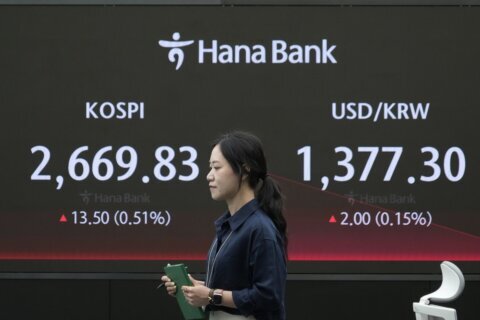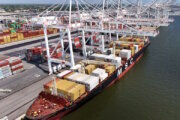TOKYO (AP) — Japanese regulators began a final inspection on Wednesday before treated radioactive wastewater is released from the wrecked Fukushima nuclear plant into the Pacific Ocean.
The inspection began a day after plant operator Tokyo Electric Power Company Holdings installed the last piece of equipment needed for the release — the outlet of the undersea tunnel dug to discharge the wastewater 1 kilometer (a thousand yards) offshore.
TEPCO said the Nuclear Regulation Authority inspectors will examine the equipment related to the treated water discharge and its safety systems during three days of inspections through Friday. The permit for releasing the water could be issued about a week later, and TEPCO could start discharging the water soon after, though an exact date has not been decided.
The plan has faced fierce protests from local fishing groups concerned about safety and reputational damage. The government and TEPCO promised in 2015 not to release the water without consent from the fishing groups, but many in the fishing community say the plan was pushed regardless. Neighboring South Korea, China and some Pacific Island nations have also raised safety concerns.
In Beijing, Chinese Foreign Ministry spokesperson Mao Ning urged Japan on Wednesday to “stop forcibly promoting the ocean discharge plan, earnestly dispose of the nuclear-contaminated water in a science-based, safe and transparent manner, and accept strict international supervision.”
Japanese Chief Cabinet Secretary Hirokazu Matsuno told reporters Wednesday that the government “abides by its policy of not carrying out a release without the understanding” of fishing groups in Fukushima. He said the government will continue to communicate closely with them and others involved, while ensuring safety and addressing the issue of reputational damage. Fishing groups fear the wastewater release will cause consumers to stop buying seafood from the area.
At an annual shareholders’ meeting on Wednesday, TEPCO President Tomoaki Kobayakawa said his company will proceed firmly with the wastewater release plan under the government’s policy. He said TEPCO will promote the distribution of fisheries products and make further efforts to gain understanding of the plan.
Government and utility officials say the wastewater, currently stored in about 1,000 tanks at the plant, must be removed to prevent any accidental leaks and to make room for the plant’s decommissioning. They say the treated but still slightly radioactive water will be diluted to levels safer than international standards and will be released gradually into the ocean over decades, making it harmless to people and marine life.
Some scientists say the impact of long-term, low-dose exposure to radionuclides is unknown and the release should be delayed. Others say the release plan is safe but call for more transparency, including allowing outside scientists to join in sampling and monitoring the release.
Japan has sought support from the International Atomic Energy Agency to gain credibility and ensure that safety measures meet international standards. IAEA has dispatched several missions to Japan since early 2022, and its final evaluation report is expected soon, though the organization has no power to stop the plan. IAEA chief Rafael Mariano Grossi is expected to visit Japan in early July to meet Prime Minister Fumio Kishida and visit the plant.
A massive earthquake and tsunami on March 11, 2011, destroyed the Fukushima Daiichi nuclear plant’s cooling systems, causing three reactors to melt and their cooling water to be contaminated and leak continuously. The water is collected, treated and stored in the tanks, which will reach their capacity in early 2024.
Copyright © 2024 The Associated Press. All rights reserved. This material may not be published, broadcast, written or redistributed.







